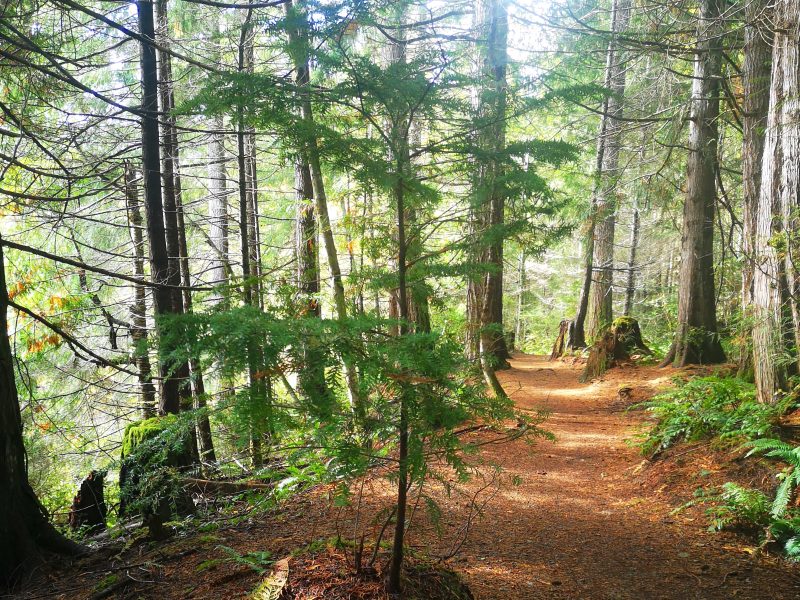
This piece originally appeared in our wildfire newsletter, The Fire Break. In this bi-weekly newsletter, environment reporter Lauren Kaljur finds out what people know and want to know about wildfires. The Fire Break is no longer running, but you can keep up with The Discourse by subscribing to our newsletters.
Welcome to The Fire Break, a newsletter that goes beyond daily news to provide you with insights into wildfires. Why? Because wildfires are here to stay and we need to get better at living with them.
I’m Lauren Kaljur, The Discourse‘s environment reporter. When I flew back home to Vancouver, B.C., after a reporting fellowship in Arizona last summer, I found the city socked in smoke like I’ve never seen before — so intense, NASA posted that it was visible from space. For the first time, wildfires hit close to home. I can’t even imagine what it was like for residents of Kamloops, B.C., last year, or folks in Northwest Territories who dealt with a “Summer of Smoke” in 2014 or the thousands evacuated from Fort McMurray, Alta., in 2016.
I don’t want to be another journalist that reacts in times of crisis and then drops off, so this space aims to change that. Every two weeks, this newsletter is going to explore different aspects of wildfires, driven by you. I’m reaching out to you all – survivors, ecologists, firefighters, emergency planners, health professionals and the hundreds of members of wildfire community Facebook groups – to find out what you think should be reported on between the crisis headlines.
The people who I spoke with so far told me the first newsletter should tackle wildfire preparedness. So the focus this week is: What should people who live in wildfire-prone areas have ready to go?
Snapshot

Stephanie Klaamas is a community organizer, heavy equipment operator and proud grandmother. She’s also a survivor of Canada’s costliest natural disaster, the 2016 wildfires of Fort McMurray.
Stephanie wasn’t home when the evacuation order was called – she was walking her dog. But she made it out alive and learned a ton in the process. Her first piece of advice? If a wildfire is getting close, “For goodness sake, have everything ready to go.”
That means be ready before an evacuation is ordered.
“You’re panicking so you’re throwing things in a bag, and you get distracted,” says Stephanie.
She’s heard stories of people opening their bags after driving several hours to find that they’d packed canned food – but no can opener – and winter coats when it’s 35 C out.
Wildfire evacuation pack list
Ultimately, your safety is more important than anything else. But if you can prepare, here’s what Stephanie recommends that you pack:
-
Fuel: “It was like an end-of-the-world movie here that day. People trying to get out of town, people trying to fuel up,” Stephanie recalls of her own evacuation. “We were low on gas, and the first gas station we went to, they shut the pump down because the fire was too close. Another one blew up.”
-
Pills: Think about what medications you’ll need. If you care for an older person, remember their pills, as well as things like dentures. If you have kids, remember their formula and diapers. “Help is great, but it takes a long time,” Stephanie explains.
-
Pets: Bring anything that’s needed for your pets, like a leash and carrying cage — not to mention the pets themselves! Remember, panic makes your brain fog up.
-
Phone chargers: “There was a lot of difficulty with chargers,” Stephanie says. Phones are a must-have for important updates on the evacuation so pack chargers — a dead battery makes them useless.
-
Water: “Water, water, water,” Stephanie says. “Cars were littered everywhere because of the ash that was coming down and the heat, cars were overheating.” Think of the basic essential survival supplies you’ll need on the road for a few days.
-
Papers: “Get your insurance info” for everything, including boats and RVs, Stephanie says. Also, don’t forget key documents that are a pain to replace: marriage certificates, citizenship records, passports, birth certificates, wills, deeds, etc. For items that are saved digitally, have a hard drive ready.
-
Priceless items: “Think about it now. Make an emergency list of things that will be easy for you to grab, and have everything you need that you can’t live without,” Stephanie says. You won’t have room for everything. Think about what you’d choose between sentimental things like Aunty Ann’s painting or photos of your grandparents.
Bonus item:
- If you have time, take video or photos of your home for insurance purposes. And remove the food from your fridge, if you can, so it doesn’t ruin the appliance if you lose power.
“In the big scheme of things, you can’t clear-cut forest,” Stephanie says. “You can’t water all areas of city. You have to pay attention to what’s going around you.” In other words: Be prepared to leave. If it helps, think of the “five Ps”: People, pets, pills, papers, priceless items.
What’s in a name?
I put out a call asking what the name of this newsletter should be and most of you voted for The Fire Break. A firebreak is land that’s been strategically cleared, similar to a dirt road, to stop a fire from spreading. My goal is to provide sustained information about wildfires before the fires start to burn, so the name was an obvious fit. [end]




